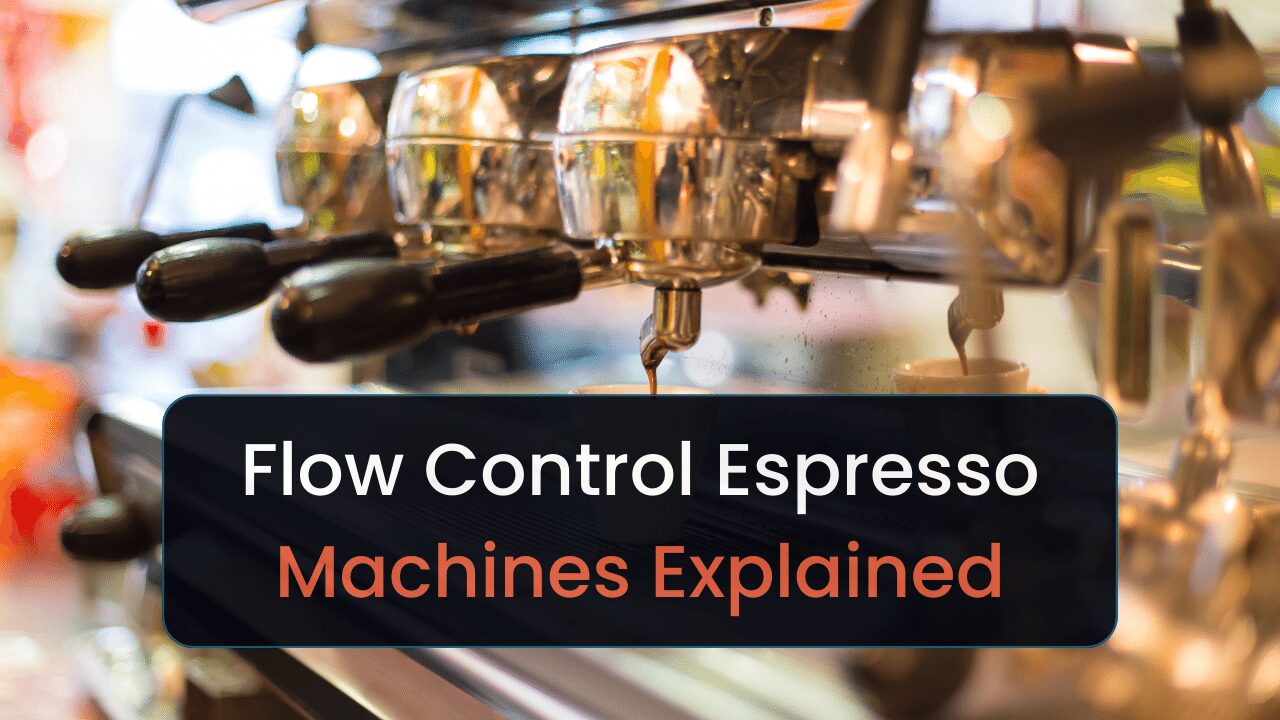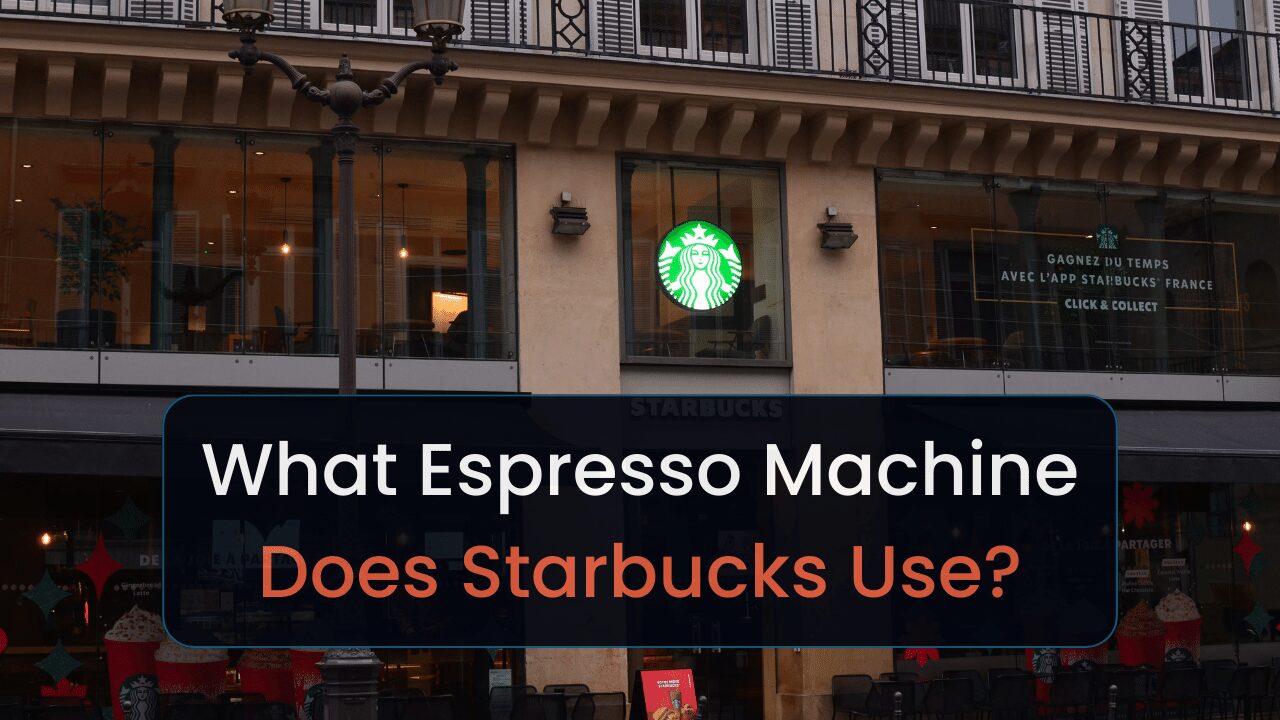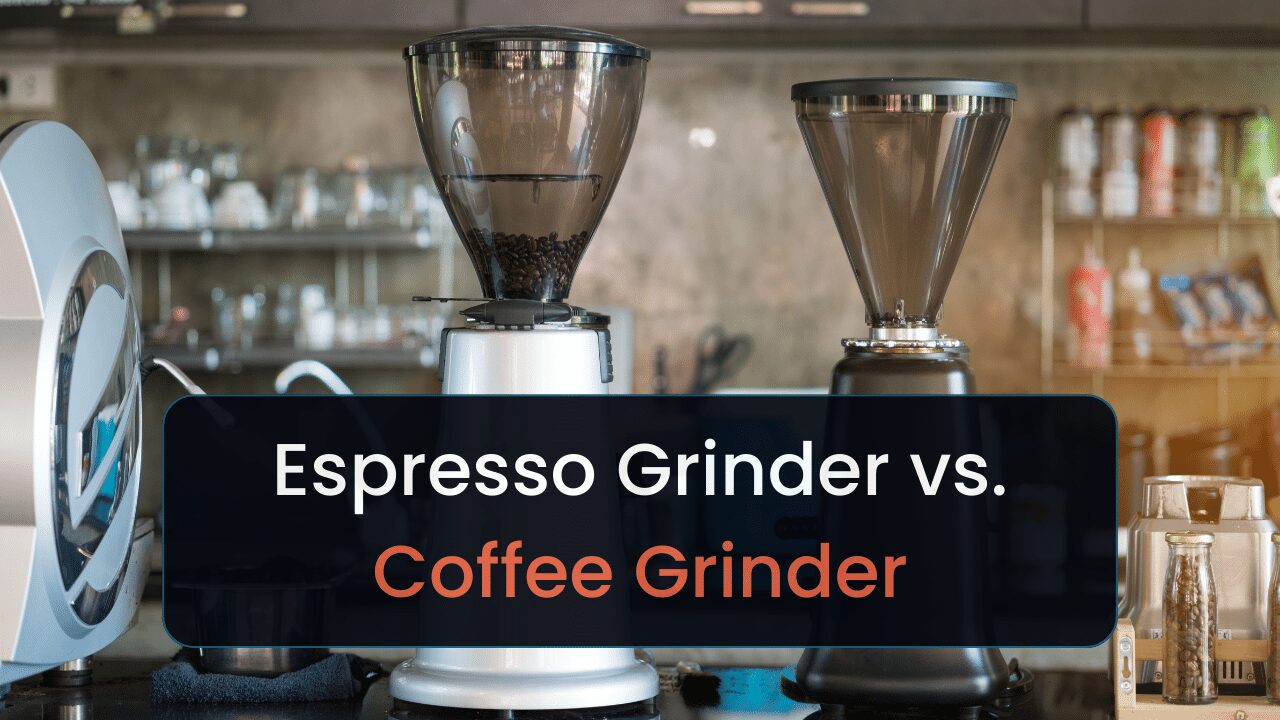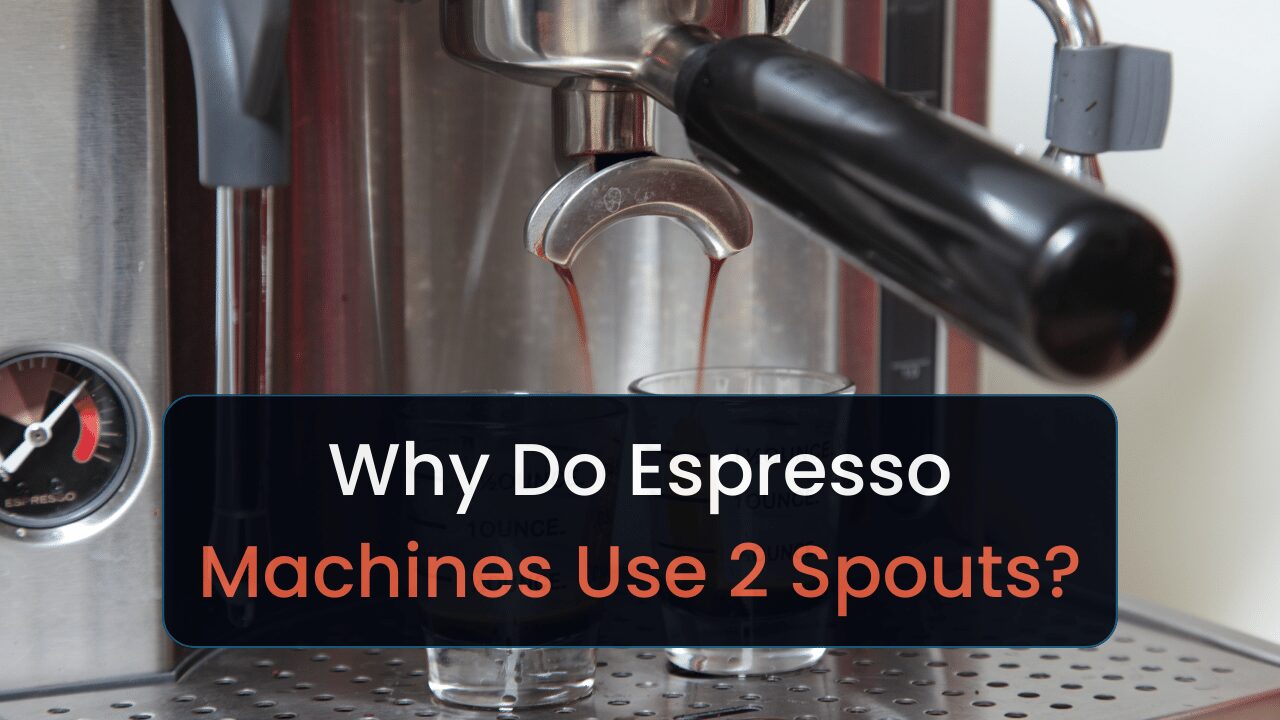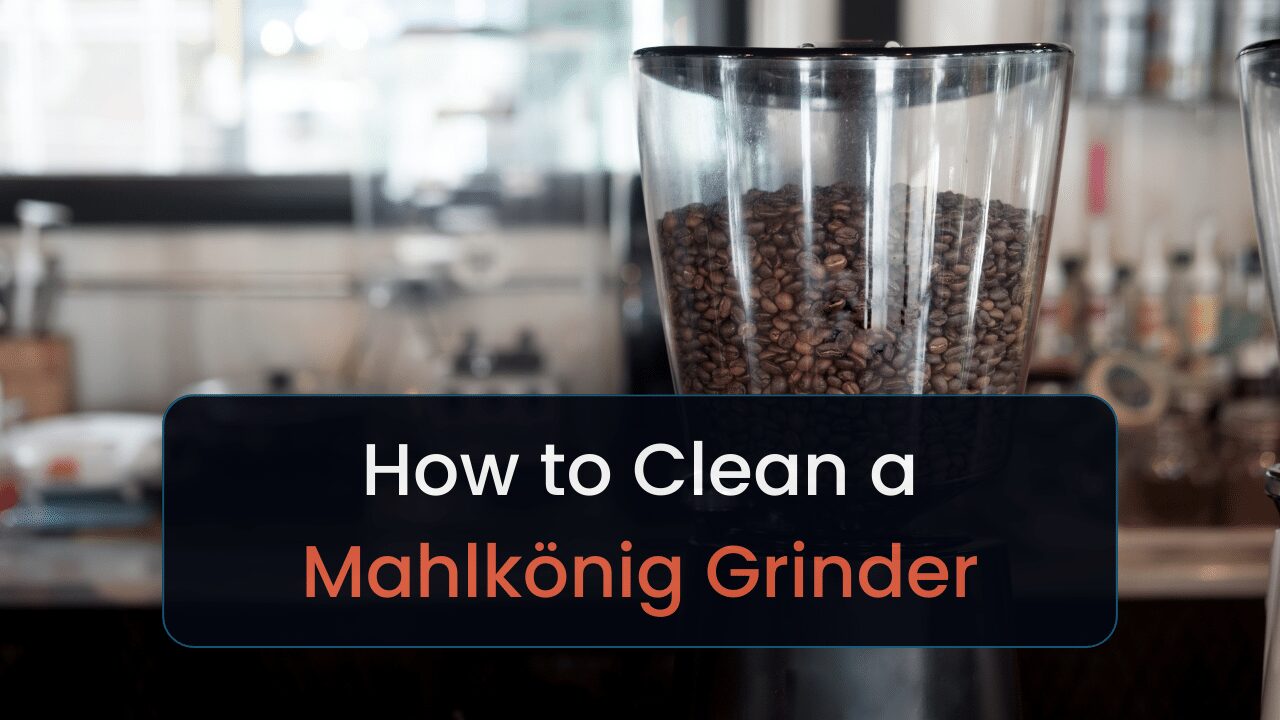This is our review of the best espresso machines under $100. Read on to find your starting espresso maker.
Only some have thousands of dollars to blow on an espresso machine. I’m the same. To get concentrated coffee, I’ve gathered a bunch of different makers and checked whether they’re worth the investment.
We went with the Nespresso Essenza Mini because it produces the highest-quality espresso (and black coffee) within this price range. It’s fantastic for anyone on a budget and who wants to make concentrated coffee quickly.
You may not want to pay a recurring premium for the Nespresso pods. We have plenty of alternatives throughout this guide.
Keep reading to learn more.
Top 7+ Espresso Machines Under $100 for Home
- Nespresso Essenza Mini: Best Overall
- Capresso Espresso & Cappuccino Machine: Best Performer
- Bialetti Moka Pot: Budget Friendly
- Mr. Coffee Steam Espresso: Best for Beginners
- AeroPress: Best Portable
- Hamilton Beach 15 Bar: Best Semi-Automatic
- Hamilton Beach: Best With Milk Frother
- De’Longhi EMK6: Best for the UK
7+ Best Espresso Machines Under $100
You won’t get the highest-quality espresso machine under $100. I’ve covered many alternatives that’ll give you espresso-like taste. Don’t waste money on a knock-off espresso machine that’ll fall apart in a month.
The following posts’ll cover the pros and cons, specifications, why I chose each machine, and additional information.
Keep this information in mind while reading:
- Dimensions:
- D: depth
- W: width
- H: height
- PID = proportional integral derivative: monitors water temperature & makes minor adjustments to keep it to a set temperature.
- ESE = Easy Serve Espresso: pods with pre-ground beans to make brewing drinks easier.
If you find other information that’s confusing, refer to the buying guide before searching elsewhere. I covered a lot of tidbits there.
1. Nespresso Essenza Mini by De’Longhi: Best Overall
![7+ Best Espresso Machines Under $100 in [currentyear] 1 nespresso essenza mini by delonghi](https://timscoffee.com/wp-content/uploads/2023/05/nespresso-essenza-mini-by-delonghi.png)
| Price | $$$$ |
| Type | Capsule |
| Dimensions | 4.33 × 12.79 × 8.07 in (D, W, H) |
| Bars of Pressure | 19 |
| Warranty | 2 years |
| Milk Frother | No |
| Water Capacity | 20.3 fl oz = 2 cups |
| Material | Plastic |
Pros
- Brews in fewer than a couple of minutes
- Heats in 30 seconds
- Auto shut off in 9 minutes
Cons
- No milk frother
- Feels cheap
- Drips water when removing capsule
The Nespresso Essenza Mini is the best espresso maker around the $100 mark due to producing high(ish)-quality espresso AND black coffee. The resulting drink depends on the capsule used.
And since it’s a capsule maker, all you do is insert a capsule, then the machine does the work for you. You will have a slightly bitter drink since it uses 19 bars of pressure. I didn’t notice much of a difference, though.
Is it worth the cost? Yes.
This machine may go a bit over $100, but it’s the only decent espresso machine in this range. You will need to spend a recurring premium on Nespresso pods, but you won’t need to buy coffee beans or a grinder.
I’ve used the Essenza Mini quite a bit at hotels. I love the manual handle to open the capsule slot. It makes inserting pods quick and efficient. I also can’t complain about the resulting drink’s flavor. It costs much less than Starbucks (per capsule), yet tastes a bit better [1].
It doesn’t include a milk frother—a disappointment for latte lovers. You’ll need at least $100 for a separate, decent-quality frother.
The machine will heat in 30 or fewer seconds, making it perfect for brewing drinks in a hurry. But be careful when removing the capsule from the maker, as they tend to drip. Keep a towel adjacent to your machine to prevent messes.
Once you finish brewing your drink, your machine will automatically power off in 9 minutes. If you’re in a hurry getting ready for work, you won’t need to worry about forgetting to turn it off.
The last complaint stems from its cheap plastic housing. They had to cut corners somewhere. So long as you don’t punch or throw your machine, it should exceed its 2-year warranty.
Here’s a “traditional” espresso maker.
2. Capresso Espresso & Cappuccino Machine: Best Performer
![7+ Best Espresso Machines Under $100 in [currentyear] 2 Capresso Espresso Machine](https://timscoffee.com/wp-content/uploads/2023/04/Capresso-Espresso-Machine.png)
| Price | $$ |
| Type | Semi-automatic |
| Dimensions | 9.4 × 7.4 × 12 in (D, W, H) |
| Bars of Pressure | 15 bars |
| Boiler Type | Single |
| Warranty | 1 year |
| Milk Frother | Yes |
| Water Capacity | 10 fl oz = 10 shots |
| Material | Stainless steel |
Pros
- Steamer works well for price range
- Compact
Cons
- No removable water tank
- Unsightly
The Capresso machine is a fantastic choice for anyone who wants a compact, affordable device that produces decent-tasting espresso.
It’s a semi-automatic machine, meaning you’ll need to perform almost every step of the espresso-making process. Except applying water pressure. And to warm the water, it uses a single boiler.
A single boiler heats the slowest of all the different boiler types. However, machines under $100 won’t have the best water warmers.
I haven’t seen anything nasty regarding the milk frother, which is rare for machines at this price point. Usually, complaints would surface that similar machines produce froth with massive bubbles. Or it breaks down quickly.
This wasn’t the case, despite the wand’s weird appearance.
The rest of the machine isn’t the best thing to look at all day. Thankfully, if you have a cupboard, you could store it. Due to its compact size. And it does support ESE pods; meaning you won’t need to buy a separate coffee grinder.
This machine’s biggest “downside” stems from the lack of a removable water tank. This addition would make the machine much easier to clean and refill.
Capresso’s machine doesn’t include a metal cup to steam/froth your milk in. You’ll need to shell an additional $8 toward this expense.
Here’s an even more affordable option.
3. Bialetti Moka Pot: Budget Friendly
![7+ Best Espresso Machines Under $100 in [currentyear] 3 bialetti moka pot](https://timscoffee.com/wp-content/uploads/2023/05/bialetti-moka-pot.png)
| Price | $ |
| Type | Stovetop |
| Dimensions | 3.94 × 5.51 × 6.69 in (D, W, H) |
| Warranty | 2 years |
| Milk Frother | No |
| Water Capacity | 160 ml = 2 cups |
| Material | Aluminum & thermoplastic |
Pros
- Portable
- Durable
- Known to last over 50 years
Cons
- Not real espresso
- Can’t use induction stovetops
The Moka Pot works best for folks who don’t use induction stovetops, want concentrated coffee, and don’t mind straying away from “true” espresso.
It’s a stovetop maker, meaning you’ll do all the espresso-making on your stove instead of using a regular machine. Unless it’s an induction stovetop. Bilaletti makes this specific model out of aluminum, which isn’t magnetic and compatible with such stoves.
They do make pots out of more magnetic materials. Check out their stores for makers made with stainless steel.
Legend has it that these machines can last over 50 years; if well maintained. Likely why around 3 out of 4 households in Italy own a Moka pot [2]. Is that not convincing enough to justify its price?
If you bring stovetops camping, or camp in an RV, the Moka pot will give you a means to produce concentrated coffee while away from home. I can’t say the same for most other espresso makers on this list.
You may not like the espresso-style drink made with these. Here’s an alternative that doesn’t require electricity.
4. Mr. Coffee Steam Espresso: Best for Beginners
![7+ Best Espresso Machines Under $100 in [currentyear] 4 mr. coffee steam espresso](https://timscoffee.com/wp-content/uploads/2023/05/mr.-coffee-steam-espresso.png)
| Price | $ |
| Type | Semi-automatic |
| Boiler Type | Single |
| Dimensions | 9.84 × 10.63 × 12.4 in (D, W, H) |
| Bars of Pressure | 15 |
| Warranty | 1 year |
| Milk Frother | Yes |
| Water Capacity | 15 fl oz = 15 solo shots. |
| Material | Stainless steel & plastic |
Pros
- Compact
- Espresso machine at a low cost
Cons
- Doesn’t foam well
- Strange chemical smell comes from plastic seal cap
The Mr. Coffee Steam Espresso machine works best for entry-level home baristas who don’t care much about espresso taste. Yet want a machine to practice making espresso with.
It’s a semi-automatic machine, which will give you control over almost all aspects of espresso making except for pressure and heating water. The automation in these areas will ensure consistency, yet allow you to practice your skills in other areas.
The single boiler will make this machine take a while to reheat after making each drink. It also prevents you from brewing drinks and frothing milk simultaneously.
It’s common for lower-priced espresso makers to have this type of boiler. Considering that Mr. Coffee isn’t a “knock-off” brand, the price fits this machine well. Just don’t expect much in terms of quality.
Considering this machine’s size, it’s a perfect addition to studio apartments or tiny kitchens. But don’t expect it to last long. Machines made with plastic don’t withstand wear and tear well.
Many have complained that the plastic seal on top lets out a weird chemical scent and they can’t get rid of it. You could keep the machine by an open window to mitigate the scent’s strength. But you’re not paying much for an espresso machine.
You’ll need to weigh the pros and cons.
And you’ll most likely use this machine for only brewing Americanos. Since it doesn’t create the most consistent textures when frothing milk. Not ideal if you want great-tasting lattes.
5. AeroPress: Best for Small Spaces
![7+ Best Espresso Machines Under $100 in [currentyear] 5 aeropress](https://timscoffee.com/wp-content/uploads/2023/05/aeropress.png)
| Price | $ |
| Dimensions | 4.75 × 4.5 × 11.75 in (D, W, H) |
| Warranty | 1 year |
| Milk Frother | No |
| Water Capacity | 10 fl oz = 1 cup |
| Material | Silicone |
Pros
- Makes black or concentrated coffee
- Portable
- No electricity required
Cons
- Not “real” espresso
- Makes 1 drink
- Requires learning curve to make espresso-like coffee
The AeroPress works best for anyone wanting to make black coffee and an espresso-style drink. It’s also a fantastic choice for travelers or anyone living in places with tiny kitchens.
An AeroPress is in its own category. And it’s not an espresso machine. But one of the ways to use the AeroPress will result in an espresso-like drink with a bit of crema. Considering most espresso machines under $100 will suck, this device is one of your best options.
It’s affordable, will deliver a caffeine fix, and doesn’t require much maintenance.
The biggest downsides come from requiring a separate coffee grinder (for your beans) and the paper filter recurring premium. If you’re tight on space, shoot for a hand grinder. They’re affordable and will produce grinds that are “good enough.”
A well-cared-for AeroPress will last at least 3 years [3]. And considering the price point, it has much more value than allegedly 80% of espresso machines in a similar price range.
You will need to put in a bit of learning to use it, though. In my experience, several YouTube videos helped me master using it in a few days.
And you’re only making 1 drink at a time with this. You shouldn’t expect more from anything under $50.
If you must have true espresso, here’s an actual espresso machine.
6. Hamilton Beach 15 Bar Espresso Machine: Best Semi-Automatic
![7+ Best Espresso Machines Under $100 in [currentyear] 6 Hamilton Beach Espresso Machine](https://timscoffee.com/wp-content/uploads/2023/04/Hamilton-Beach-Espresso-Machine.png)
| Price | $$$ |
| Type | Semi-automatic |
| Dimensions | 12 × 9.6 × 11.6 in (D, W, H) |
| Bars of Pressure | 15 |
| Boiler Type | Single |
| Warranty | 1 year |
| Milk Frother | Yes |
| Water Capacity | 45 fl oz = 45 solo shots |
| Material | Plastic |
Pros
- Removable water tank
- Supports ESE pods
Cons
- Steamer isn’t amazing
- Artificially creates crema
Hamilton Beach’s espresso machine is an excellent addition to smaller kitchens or studio apartments due to its compact size. And due to its ESE support, you won’t need to buy a separate coffee bean grinder.
It’s a semi-automatic espresso maker, which means you control almost every part of making espresso except for boiling water and applying pressure.
Hamilton Beach’s espresso maker is worth the cost. So long as you don’t mind a machine that doesn’t produce the highest-quality milk froth and crema. You’re paying under $100. It’s not like you’re getting a Breville (notable brand) machine.
The steam wand doesn’t create creamy foam; instead, it makes big bubbles. Meaning, you can’t make a latte or macchiato that’ll taste good or have a great mouthfeel.
You could save space and money. Instead of buying a grinder plus beans, get ESE pods. They’re pre-ground beans stuffed in pods that make espresso brewing easier. The lack of a grinder could save counter space, making this an ideal choice for smaller apartments.
Instead of making natural crema, this machine includes a crema construction filter. It creates crema while not enriching the espresso’s flavor, which is what crema is supposed to do.
But it has a removable water tank. It makes filling and cleaning your tank easier, since you can carry it to the sink.
Let’s move on to another espresso machine.
7. Hamilton Beach Espresso Machine: Best With Milk Frother
![7+ Best Espresso Machines Under $100 in [currentyear] 7 hamilton beach espresso machine 15 bar espresso machine](https://timscoffee.com/wp-content/uploads/2023/05/hamilton-beach-espresso-machine-15-bar-espresso-machine.png)
| Price | $$ |
| Type | Semi-automatic |
| Dimensions | 9.6 × 12 × 11.6 in (D, W, H) |
| Bars of Pressure | 15 bars |
| Boiler Type | Single |
| Warranty | 1 year |
| Milk Frother | Yes |
| Water Capacity | 22 fl oz = 22 solo shots |
| Material | Plastic |
Pros
- Includes cup warmer
- Supports ESE pods
Cons
- Coffee puck is soup after use
- Steam wand doesn’t produce much foam
- Cheap plastic housing
Hamilton Beach’s Espresso Machine works best for anyone wanting an affordable espresso maker that supports espresso pods and wants a short-term machine. I’ll return to this point.
Firstly:
It’s a semi-automatic espresso machine—one of few on this list. This means you’ll retain almost complete control over tailoring shots to your preference. Except water flow and pressure.
This is one of your best options if you’re after a cheap semi-automatic machine. It’s not a knockoff, and it makes espresso. Is it good? In my experience with these low-cost machines, it’s not the best.
But it’s something.
To further save money and counterspace, this machine supports ESE pods. Removing the need for a separate coffee grinder and the recurring premium of coffee beans. Despite the machine’s bulky size, you could save some space since you’re not getting a grinder.
The steam was not producing the most foam, making it not the best option for anyone wanting to make lattes. Because part of the purpose of lattes, macchiatos, etc., is to have a foamy drink.
The coffee puck, and remaining grounds in the portafilter, after use, will look and feel soup(y). Making it difficult to clean.
Let’s cover an option that doesn’t take up as much space and produces a better-tasting drink.
8. De’Longhi EMK6: Best Espresso Machine Under £100 UK
![7+ Best Espresso Machines Under $100 in [currentyear] 8 delonghi emk6](https://timscoffee.com/wp-content/uploads/2023/05/delonghi-emk6.png)
| Price | ££ |
| Type | Stovetop (technically) |
| Dimensions | 9.8 × 9.3 × 4.25 in (D, W, H) |
| Bars of Pressure | 0 |
| Boiler Type | Aluminum |
| Warranty | 30–60 days |
| Milk Frother | Yes |
| Water Capacity | 251 ml = 6 cups |
| Material | Stainless steel |
Pros
- Compact
- Automatically powers off
- No stovetop required
Cons
- Ugly
- A bit pricey for a Moka pot
- Cheap plastic housing over carafe
De’Longhi’s EMK6 works best for anyone who wants to reduce the risks associated with stovetop “espresso” makers. Yet, wants a compact device.
A stovetop coffee maker produces pressure within its chambers using the heat from a stovetop. This results in an espresso-like beverage. But it’s technically not true espresso.
I don’t know whether the price point for this Moka pot-like machine is worth it. If you’re prone to forgetting to turn stuff off, this is worth it. Since you won’t destroy your machine (or home).
It does all this by using an electric base. However, the electric base doesn’t demand additional counter real estate. Making it an excellent option for hotel rooms, studio apartments, or tiny kitchens. You could take this fella traveling.
Better than paying top dollar for coffee at cafés while abroad.
I wouldn’t want anyone to know I have this, though. The cheap plastic housing around the carafe makes this machine look like it should be $10. You’ll likely have an awkward situation where someone asks you how much you paid, then you hesitantly tell them the price.
Again, it’s a decent alternative to a Moka pot.
That’s all for the reviews.
How to Choose the Best Espresso Machine Under $100
Use this list to build a criteria when shopping for espresso makers under $100:
| Checklist | Why it’s Important |
| Water Pressure | Determines drink flavor. |
| Design | It should fit into your kitchen—design- and size-wise. |
| Brewing Capabilities | Drinks it can brew. |
Other espresso-making guides include a lot more criteria (e.g., ease of use), but won’t include it in this one. Because almost all machines or makers in this price range will only have the bare minimum.
I’d also usually tell my audience that different machines will offer varying boiler types like thermoblock, single- and dual boilers. When buying appliances under $100, you’re only getting single boilers.
They heat your machine slower than thermoblock and dual boilers.
I will cover factors to keep an eye on that are included in these makers.
1. Water Pressure
- <7 bars: under-extracted; super sour
- 7–9 bars: Mild flavor & a bit sour
- 9 bars: sweet spot; balanced flavor & excellent starting point
- 15 bars: stronger-tasting drink, but not too bitter
- >15 bars: over-extracted drink; excessively bitter
Bars of pressure will determine how much water pulses through an espresso maker’s portafilter. The amount of pressure will determine the drink’s flavor. Aiming for 9 bars of pressure is a safe spot for ensuring a balanced taste in your drink.
All espresso machines under $100 will have 9–15 bars of pressure. The same doesn’t apply to “niche” devices like Moka pots or AeroPress. Since they’re technically not espresso.
2. Design
- Size: Determines whether it’ll fit on your counter.
- Aesthetics: Whether it’s ugly.
- Materials: Determines lifespan.
- Water reservoir size: Number of espresso shots before refilling reservoir.
Most espresso machines under $100 will have a cheap plastic(y) feel, resulting in them not lasting long. Fortunately, most espresso machines will come with at least a 1-year warranty. Allowing you to replace your machine if something goes aloof.
When I had cheap espresso makers I wasn’t proud of showing it off to guests. I was even tempted to hide it in a cupboard. If you feel the same, that’s possible with more compact devices.
However, if you opt for a stovetop espresso maker, you’ll have a decent-looking and super durable device.
3. Brewing Capabilities
Here are all the drinks espresso makers can brew:
| Americano | Cortado | Long macchiato |
| Black Eye | Guillermo | Rápido y Sucio |
| Cappuccino | Galão | Café Crema |
| Dripped Eye | Irish Coffee | Freddo Cappuccino |
| Flat White | Café Medici | Affogato al Caffe |
| Latte | Café Breve | Mocha |
| Lazy Eye | Vienna Coffee | Cubano |
| Manilo Long Black | Macchiato | Zorro |
| Red Eye | Espresso Romano | Marocchino |
Some of these options—e.g., cappuccino, latte, and mocha—required frothed/steamed milk. You’ll need a milk frother to make these drinks. And all espresso machines include this.
Devices like capsule, stovetop, and AeroPress coffee makers also brew black coffee. Giving you more options and better tasting coffee than espresso machines under the $100 mark.
Before moving on to machine types, don’t expect the best-quality espresso from machines under $100. You get what you pay for. And decent-quality espresso machines start at $500. Sometimes you’ll find great ones in the $300–400 range.
Types of Espresso Machines
Here are all the types of espresso machines available:
| Machine Type | What it Automates | Best for |
| Super-automatic | Everything | Automated traditional espresso |
| Semi-automatic | Pressure & water flow | Graduating from manual machines |
| Automatic | Grinding, tamping, & brewing | Balancing cost & automation |
| Manual | Nothing | Learning the basics |
| Capsule | Everything | Convenience, cost, & speed |
| Stovetop | Nothing | Budget |
You’ll never find a super-automatic and automatic espresso machine under $100. If you do, run. It might catch on fire. These machines are always more than $350.
The next several sections will cover espresso machines you WILL find in this price range. Let’s get to it.
1. Semi-automatic Machines
- Average price: $50–$2,000 (varies by model).
- Automation: Pressure & water flow.
- Advantages: Control, consistency, & user-friendliness.
Semi-automatic espresso makers are basically manual espresso makers, but automate water flow, boil, and pressure. Making life a bit easier, while giving you almost total control over your espresso.
You’ll rarely see a decent-quality semi-automatic machine under $100. I recommend staying away from most machines that you see within this price range. Unless they’re refurbished models from manufacturers like Breville and Gaggia.
2. Manual Machines
- Average price: $100–$800 (varies by machine).
- Automation: Nothing; do everything by hand.
- Advantages: Mastery, customization, & mechanical simplicity.
Manual machines require you to perform every step of espresso making. It’s horrible for making drinks quick, but excellent for tailoring drinks to your preferences.
You won’t find high-quality manual makers under $100. Unless you want to put the AeroPress under this category, which it doesn’t belong under. However, you will find high(ish) quality lever espresso makers in the $100–200 range.
For instance, The NEO.
3. Capsule Machines
- Average price: $100–$700 (varies by machine).
- Automation: Brewing & water flow.
- Advantages: Simplicity, consistency, & minimal mess.
Capsule espresso machines require you to place a pod in the machine, then it brews your drink. Choose between black coffee and crema-rich espresso and have it brewed within a minute.
Ideal for those living fast-paced lifestyles and who don’t want to buy a separate coffee grinder. Though, it’s rare to find a decent brand-name capsule maker that’s under $100.
4. Stovetop Makers
- Average price: $10–$50 (varies by maker).
- Automation: Nothing; do everything by hand.
- Advantages: Portable, brews coffee & espresso-style drinks, & affordable.
Stovetop coffee makers produce a high-quality espresso-like concentrated coffee drink by using a stovetop to create pressure within its chamber.
For under $100, and even under $50, this is your only viable option for decent-tasting concentrated coffee. Though, it’s technically not espresso.
FAQs for Espresso Machines Under $100
Keep reading to find frequently asked questions about espresso machines under $100.
Can you Make Good Espresso with a Cheap Machine?
Espresso made from cheap machines will likely have a taste that’s too sour, bitter, or watery. You’re best off creating espresso-like tastes with stovetop coffee makers if you’re after cheap “espresso.”
Our Verdict
The top 3 picks are as follows:
- Nespresso Essenza Mini by De’Longhi: One of few very affordable capsule machines.
- Capresso Espresso & Cappuccino Machine: The best semi-automatic machine at this price point.
- Bialetti Moka Pot: Affordable & portable.
We chose the Nespresso Essenza Mini as the best espresso maker around this price range due to its high-quality taste and speed. It is a bit over budget, but consider what you’ll save over buying a crappy machine that’ll break down quickly.
Are you willing to spend around $200 for an espresso machine? Check out our recommendations.

